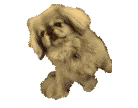In total there are 3,304 emojis in the Unicode Standard, as of March 2020. The most recent emoji release is Emoji 13.0, which added 117 new emojis.
Seems like a lot, but if emoji is its own language, then we're basically infants when it comes to speaking it.
Studies have shown that the average English native speaker knows about 20,000 words with university-educated people knowing around 40,000 words
Plus, we don't all mean the same thing when we type 💁 or ✋ — we're not quite experts yet...!! Emoji pack a punch, sometimes literally, so if you plan to use them, be sure you know what you're doing.
Emojis are different from emoticons Many people get confused between emojis and emoticons, they are pole apart.
Emojis are real images and symbols that are rendered on your devices, whereas emoticons are some expressions and smiles that can be created by using the very basic characters from your keyboard such as - ) ^^ etc.
For instance, :-) is an emoticon which indicates a smile, and usually written at a right angle to the direction of the text
simple, ain't it?

It all started with emoticons — facial expressions made out of punctuation — which made their gala opening in a concern of an 1881 magazine.
Did you hear?
1881..!!!
Emoticons are very old. "The first ASCII emoticons, :-) and :-( , were written by Scott Fahlman in 1982, but emoticons actually originated on the PLATO IV computer system in 1972. In Western countries." and they became more mainstream after the turn of the millennium.
Mr. Emoji
According to the brink, the man we can thank today for emojis is Shigetaka Kurita(an employee of NTT DoCoMo back in the day), the father of the emoji. He realized that digital communication—whether it’s email or, at the time, pagers—fleeced human beings of the ability to communicate emotion. So, his invention was emojis.

“Everything was shown by text. Even the weather forecast was displayed as ‘fine’. When I saw it, I found it difficult to understand. Japanese TV weather forecasts have always included pictures or symbols to describe the weather—for example, a picture of the sun meant ‘sunny’. I’d rather see a picture of the sun, instead of a text saying ‘fine’.”
After Kurita had finished his initial designs, he took them straight back to the major tech companies that initially rejected his suggestion. But soon, J-Phone and AU—took some artistic license with Kurita’s rough designs.

Entering Apple.
If we want to thank one single company for popularizing emoji globally then it should be none other than APPLE. Apple realized the huge demand for this outside Japan too.
It was only in 2011 that Apple began to officially support emojis internationally with the iOS 5 release.
In just five, short years, these pictographs that started out from the imagination of one man working at NTT DoCoMo have become an indelible standard on mobile devices throughout the globe.
After Apple takes on emojis on their smartphones, the other big contender in the mobile OS world soon followed action: Google’s Android. With Android jumping on board, soon emojis become a medium of communication in the digital world.
The final touch of Unicode standard.
The mushrooming of emojis across the universe, across all devices, doesn’t just happen by magic. It took a lot of work and the Unicode Standard to make it a reality.
In 2009, a pair of Apple engineers, Yasuo Kida and Peter Edberg, joined in and submitted an official proposal to adopt 625 new emoji characters into the Unicode Standard. Unicode accepted that proposal in 2010, in a move that would soon make emoji accessible everywhere.
Allow everyone from teen girls and boys to moms and dads to text emojis like mad.

If you enjoyed reading this post or you've some additional facts ➕, do share it in the comment section. Stay tuned for more interesting and divergent stuff related to tech.!! 🙌


